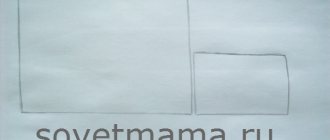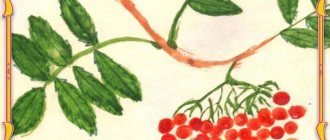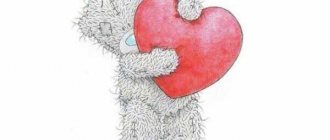On the topic: methodological developments, presentations and notes
Summary of a lesson on traffic rules in the middle group “Country of Traffic Rules”.
Systematize children's knowledge about traffic rules, signs and their meaning.
consolidate children's knowledge about traffic lights and their signals; systematize children's knowledge about road signs and their meaning; consolidate knowledge about land and air transport; develop observation and visual skills.
Lesson notes for children and parents “We follow the rules of the road.”
Source
Traffic rules in children's drawings
I. Statement of the problem
“Keep order, and order will keep you” Latin saying
The motorization of cities, the mobility of the population, and the aging of road transport infrastructure occur against the background of an indifferent attitude towards the possible consequences of road traffic injuries, a lack of adequate understanding by road users of the causes of accidents, and insufficient involvement of the population in activities to prevent road accidents.
The problems arising in connection with this require the development and implementation of preventive measures to prevent an increase in the number of accidents involving children, and propaganda work with the families of pupils.
Children are a special category of road users.
An analysis of modern methodological literature has shown that when teaching children the rules of behavior on the streets and roads, explanatory and illustrative methods are most widely used: conversations, didactic games, stories, reading works of fiction. They allow you to convey a large amount of information in the shortest possible time, pose problems to preschoolers and indicate ways to solve them, evoke vivid pictures and traffic situations in the mind, and activate memory and feelings.
II. Project goals and objectives
The goal of the creative project “Road Rules in Children’s Drawings” is to ensure that children consciously learn the rules of safe behavior on the streets and roads of the city and develop stereotypes of law-abiding behavior of road users.
Tasks on the way to achieving this goal:
- expand children's understanding of the rules of safe behavior on the streets and roads of the city through active forms of cognition: design, drawing, artistic and speech activities.
- teach children to reflect in their drawings their knowledge and ideas about the Rules of the Road, and share their experiences with others.
- to form stereotypes of law-abiding behavior among road users and to promote road safety.
III. Project participants
Project type: internal, group, interdisciplinary, mid-term.
Authors of the project: teachers of the 2nd junior group Shayakhmetova A.R., Sharafeeva Z.V.
Project participants: kindergarten children, teachers, senior teacher (project leader), music directors.
The project is carried out within the framework of integration of educational areas:
- "Safety",
- "Artistic creativity"
- "Communication",
- "Educational field of music".
IV. Project implementation timeframe
Project duration: November-December.
Project implementation stages:
- Stage 1 – search (2 weeks),
- Stage 2 – analytical (1 day),
- Stage 3 – practical (1-1.5 weeks),
- Stage 4 – presentation (1 week),
- Stage 5 – control (4 days).
V. Project implementation mechanism
Stage I – search
The main tasks of the search stage will be to search and analyze the problem, update the existing knowledge and experience of preschoolers, and set goals.
To achieve these goals, the following activities are planned:
- Organizing an excursion to a children's library in order to select books to read according to the rules of safe behavior on the streets and roads of the city, the history of transport.
- Conducting conversations with children to solve problem situations: “Rules and road safety”, “Being an exemplary pedestrian is allowed!” etc.
- Consolidating knowledge gained from books in didactic games “Road Signs”, “House, Street, City”, “Road and Safety”.
Stage II – analytical
The main tasks of stage II will be the analysis of available information and resources, the construction of an activity algorithm.
To achieve these goals, the following activities are planned:
- Clarification and classification of traffic rules
- Coming up with plots, discussing compositional solutions.
- Preparation of materials and equipment.
- Construction of an activity algorithm.
Stage III – practical
The main task of stage III will be the implementation of the planned technological operations.
To solve this problem, the following activities are planned:
- Drawing illustrations for the book “Road Rules in Children’s Drawings.”
- Children compose descriptive stories and comments on the plots of drawings.
- Design of the book for children and adults “Road Rules in Children’s Drawings.”
IV stage – presentation
The main tasks of stage IV will be the presentation of the project and the study of the possibilities of using project resources.
To achieve these goals, the following activities are planned:
- Presentation of the creative project “Road Rules in Children’s Drawings.”
- Making desk calendars with drawings from the book “Road Rules in Children’s Drawings.”
- Participation in campaigns to promote road safety.
Stage V – control
The main task of stage V will be to analyze the results of the project and formulate conclusions.
VI. Expected results
- Expanding preschoolers’ understanding of the rules of safe behavior on the streets and roads of the city.
- Children’s ability to reflect in drawings their knowledge and ideas about the Rules of the Road, compose descriptive stories, and share their experiences with others.
- Creation of the book “Road Rules in Children’s Drawings”, which makes it possible to promote road safety and form stereotypes of law-abiding behavior among road users.
VII. Evaluation of results
Studying the level of development of children in the educational field “Fundamentals of Life Safety”, the formation of ideas about the rules of safe behavior on the streets and roads.
The success of the creative project will be evidenced by the compilation of the book “Road Rules in Children’s Drawings.”
VIII. Further development of the project
In the future of the kindergarten:
- Making desk calendars with drawings from the book “Road Rules in Children’s Drawings.”
- Participation in campaigns to promote road safety.
Summary of a drawing lesson in the preparatory group “Cars on the Road”
Shamsutdinova Flyura Rafailovna
Summary of a drawing lesson in the preparatory group “Cars on the Road”
Notes on drawing in the preparatory group on the topic “ Cars on the road ”
Program content: Learn to depict various types of transport, their shape, structure, proportions (ratio of parts in size, consolidate the ability to easily depict an outline with a simple pencil and paint over it with pencils, develop the ability to complement the drawing with characteristic details, bring the idea to completion, evaluate your work, work carefully .
Equipment: pictures with different types of transport, roadways, wax crayons, a simple pencil.
Summary of a non-traditional lesson on cognitive development and drawing on the topic “Road signs”
Summary of the integrated lesson
on cognitive development and drawing
on the topic "Road signs"
(preparatory group)
Program content:
Educational:
-To consolidate children’s knowledge about warning, prohibitory, prescriptive, information and directional road signs and service signs
-Formation of the foundations of the safety of one’s own life.
Educational:
-Develop a sense of composition, teach children to harmoniously arrange the drawing on the plane of the sheet;
— Develop creativity, learn to come up with a drawing and translate your idea on paper, independently choosing visual media;
— Improve skills in creating images using various visual media;
— Develop the ability to make a pencil sketch of a drawing before using color.
Educational:
— To develop the ability to independently use existing knowledge and previously developed visual skills.
Tasks:
“Physical culture” - education of physical and personal qualities.
“Health” - preserving and strengthening the health of children.
“Communication” - development of free communication with adults and children;
— development of personal and intellectual qualities.
“Cognition” - development of cognitive and research activities;
— formation of a holistic picture of the world;
— broadening the horizons of children.
“Artistic creativity” - development of productive activity.
“Safety” - the formation of the foundations for the safety of one’s own life.
Materials for the lesson.
— Sheets of paper A-4;
— Colored and simple pencils, felt-tip pens;
— Watercolor paints, brushes, jars of water;
— Various paintings, photo illustrations with images of streets, various city symbols;
— A set of road signs or their images.
Vocabulary work:
warning, prohibiting, informational, instructive, prescriptive.
Individual work:
Help children who have difficulty choosing images of signs and choosing visual materials.
Methods:
gaming, visual, verbal, practical, heuristic, partially search, motivational,
Techniques:
examination, conversation, artistic expression, instructions, explanations, independent activity, use of various visual materials, development of resourcefulness and activity, children's activity by including a problem situation, persuasion, encouragement, the arrival of a hero.
Preliminary work:
conversation "Road signs"; traffic rules classes in a group; didactic games “Cautionful Pedestrian”, “ABC of Road Signs”, “Smart Machines”, “; reading fiction on the topic of traffic rules; familiarity with road signs in everyday life.
Summary of a lesson on traffic rules in kindergarten
Traffic Laws.
Traffic light. Objectives: to introduce the designation of road signs. Traffic signals; learn to draw a plot composition; develop the skill of navigating by road signs and traffic lights. Materials and equipment: illustrations depicting the roadway, traffic lights, pedestrians, road signs, sheets of paper, paint.
Progress of the lesson.
1. Organizational moment. Greetings. Report the topic of the lesson. 2. Conversation about the meaning of traffic rules. Educator. Every year there are more and more cars. Every day there are accidents on the roads. Why do you think this happens? (Children's answers) Drivers and pedestrians do not always follow traffic rules. What does this lead to? (Children's answers.) What should we know and follow in order to cross the road correctly? (Children's answers.) The teacher shows an image of a traffic light. Questions:
• What is this?
• Why do we need a traffic light? • What does the red signal mean? • What does the yellow signal mean? • What does a green traffic light mean? 3. Reading a poem by M. Druzhinina. Kitty, are you still here? Look at the traffic light! You see, the light turned red, so stop! It's dangerous to go! And you have to wait, Even though there are no cars in sight! When the yellow light is on, it tells all drivers: “Be careful, drivers! Another light will light up soon!” The duck quacked: “Quack, quack! I see green light! Come on, children, together, in step, let’s cross the road!” 4. Exercises. • Rhyme. “Guys!” Alena shouted. “Let’s quickly go to the light... (green). They look at the traffic light. Pedestrian and .... (driver). • Choose an answer. Question: -What should pedestrians do when the light is red? 1. Run out onto the pavement. 2. Click each other on the nose. 3. Stand calmly on the sidewalk. 5. A story about traffic controller signals. If there is no traffic light, then at the intersection you can see a traffic policeman on duty. He controls movement by performing certain movements with his hands. If the traffic controller raised his hand up, it means “Attention!” When the traffic controller's arms are lowered, it means "No movement." If the traffic controller points his baton forward, you can go. Look at the illustrations and say when to stand and when to walk.
6. Familiarization with the pedestrian crossing. Educator. In some places on the road there are many transverse white lines crossing the street. This is a "transition". What is another name for these lines? (Zebra.)
Listen to the poem and say: how to cross the road correctly. We are walking across the road. I cross the road like this: First, I’ll look to the left And, if there’s no car, I’ll walk to the middle. Then I look carefully - Be sure to turn to the right - And, if there is no movement, Forward! Without delay! A car on the side of the road, a van, a large snowdrift, they make it very difficult for me to see: What’s there on the pavement? Perhaps the KamAZ is rushing here now at terrible speed! The road here is clear to me, It’s dangerous to cross! Our kitten is very small, but he learned a lot. And he will cross the road only where the crossing is! “Where should I,” he shouts, “find a Zebra so I can walk along it?” 7. Exercise “Insert the missing word.” Educator. Listen to what the policeman advises and fill in the missing words: Children! You must cross...... calmly. You can’t jump out onto the road…….. As soon as the traffic light turns green, look carefully at…….., check if all the cars have already stopped. When crossing the street you must first……. Turn left, and in the middle of the roadway turn right, so you can see whether the cars are far away or close. Remember the rules: you cannot play near roads, cross the street in front of nearby cars, ride a bicycle on the roadway, climb over a fence on the road; You need to go around the tram in front, and the bus behind. 8.Explanation of the meanings of road signs.
- parking place
- crosswalk
- cycling is prohibited
- No Pedestrians
— children (a section of the road near a child care facility)
— railway crossing without a barrier 9. Drawing according to plan. The teacher suggests depicting a plot composition: a road with cars and a traffic light or a traffic light and pedestrians near the road. As a sample, illustrations on the topic are hung on the board. 10. Listening to the song “If I were a machine” (lyrics by S. Antonova, music by A Pereskokov, Songs for kindergarten). Children determine the tempo of the music, the pitch of the sounds, and express their attitude to the song. 11.Result of the lesson. Literature used: 1. Complex lesson in a preschool educational institution. Middle group. According to the program edited by M.A. Vasilyeva, V.V. Gerbova, T.S. Komarova. Publishing house "Teacher" 2010
We recommend watching:
Entertainment according to traffic rules in the middle group of kindergarten. Scenario Scenario of entertainment according to traffic rules for children of primary preschool age Scenario of entertainment according to traffic rules for children of the 1st junior group Summary of a lesson in the senior group on traffic rules on the topic: Road signs
Similar articles:
Lyrics of songs on traffic rules for preschoolers
Didactic games on traffic rules for preschoolers
Lesson notes for junior group 1. Traffic Laws
Traffic rules holiday in the preparatory group
Traffic rules in kindergarten. Senior – preparatory group
Preview:
Summary of a lesson on traffic rules in the senior group of kindergarten.
Topic: “In the world of road signs”
Goal: To systematize children’s knowledge about traffic rules, the role of traffic lights and road signs.
Lesson materials
Hello guys! Now I'll tell you a riddle
Here's a three-eyed fellow. How cunning he is! Whoever comes from anywhere will wink at both this and that. Knows how to settle a dispute, Multicolored...
Children's answers. Traffic light
Educator: Well done guys, right. So who do you think are the best friends at a traffic light?
Children's answers. Road signs.
Do you know all the road signs?
Educator: Now let's check whether you know the road signs or not.
Here I have road signs on my table, and your task is not just to guess the riddle, but also to find the road sign that this riddle is talking about. And so, let's begin. First riddle.
And now we will play with you.
Summary of GCD in the senior drawing group on the topic “Road Rules”
Galina Voroshilova
Summary of GCD in the senior drawing group on the topic “Road Rules”
Abstract of the GCD in the senior drawing group on the topic : “ Road rules ”
Prepared by teacher: Voroshilova G. A.
Integration of educational areas: Social and communicative development; cognitive development; speech development; artistic and aesthetic development ( drawing )
.
Types of children's activities: cognitive, communicative, perception of literary words, playful, productive.
• physical exercise “We are drivers!”
;
Activation of the dictionary: pedestrian, driver, traffic light, pedestrian crossing, roadway.
Materials: soft toy Eeyore, road sign “Pedestrian crossing”
, a traffic light model, a street model, a car, a little man, a landscape sheet, colored pencils
(6 colors)
for each child.
Individual work: Strengthen the ability to participate in a conversation, not interrupt peers and the teacher (Andrey, Maxim)
;
strengthen the ability to hold a pencil correctly (Vlad, Dima)
.
Discussion of specific road situations .
Examination of illustrations on traffic regulations.
Guessing riddles according to traffic rules.
Reading fiction: S. Volkov “About traffic rules ”
, M. Manakova
“Learning to cross
the road ” .
Conversations on the topic: “I am an exemplary pedestrian”
,
"A safe way to cross the road "
.
Listening to the children's song “Pedestrian Crossing”
summary of GCD in the middle group in fine arts "Pedestrian crossing sign"
Nikishina Irina Vyacheslavovna
MBDOU No. 16, Vyborg
Position: teacher
Abstract of GCD artistic and aesthetic development with children of the middle group “Pedestrian crossing”
Educator: Nikishina Irina Vyacheslavovna
Target:
consolidate children's knowledge of traffic rules.
Program content:
Learn to draw a “Pedestrian crossing” road sign, strengthen your skills in drawing with gouache, and strengthen your knowledge of traffic lights.
Develop attention, speech, memory.
Improve safe behavior skills on city streets.
Equipment
: brushes, gouache (watercolor), water jars, napkins, paper, demonstration material.
Children look at the “Crossroads” poster on the interactive board. The teacher asks them questions.
• What does the poster show?
• What types of transport do you see in the picture?
• Where are the cars located?
• Why did they stop?
If the traffic light is red for cars, what signal is at the traffic light for pedestrians?
How do people cross the road?
What stripes do you see on the road?
Educator. Now guess the riddles. Listen carefully, guess carefully.
Who always walks?
Guessed it?... ( Pedestrian)
Striped horses lay across the roads -
All the cars stopped if we passed here. ( Transition)
It will oblige us to drive quietly, a turn close will show us
And it will remind you what and how you are on your way... ( Road sign)
I blink my eyes tirelessly day and night,
I help cars and I want to help you. ( Traffic light)
Educator:
Well done, you know how to solve riddles, you guessed all the riddles correctly.
The teacher draws attention to the urgent letter that was sent to him on his phone. “Guys, I received an urgent message from Dunno, who lives in a magical city. And he doesn’t know at all what the “Pedestrian Crossing” sign looks like, and therefore he is afraid and does not know where he can cross the road. Let’s draw and give him this road sign so that he can put them up in his city and will no longer be afraid to cross the road.”
On the screen there is a picture of a road sign “Pedestrian crossing”.
Now let’s draw a road sign “Pedestrian crossing”. What geometric figure does this sign resemble? Who is in the center of the sign? What color background is the pedestrian walking against? What color is the pedestrian painted? What color are the zebra stripes? Now get to work.
physical education minute.
We are walking down the street. Children are marching, raising their knees high.
And we raise our knees.
Raise your arms above your head - Raise your arms up.
The guard was surprised. Moves hands left and right
Progress of the lesson
— Guys, look at these photo illustrations, at the pictures. I want to draw your attention to something that we previously paid little attention to - the various symbols on the streets of our city.
Various road signs hang along the streets . Some you know.
For example, what do these signs ? (show children familiar signs - “Pedestrian crossing”
,
“Underground passage”
,
“Beware of children”
,
“Traffic prohibited”
and others).
See why all these signs are different in shape and color. There are round, triangular, square, on blue and white backgrounds. Do you know why they are so different? (children's answers)
These signs in red circles are prohibitive. Look: “Traffic prohibited”
,
“Bicycle traffic is prohibited”
,
“Pedestrian traffic is prohibited”
,
“turn is prohibited”
.
These are the strictest signs .
But these ones - in red triangles - are warning ones. They warn the driver about some kind of danger: “slippery road ”
,
“Rough
Road ” ,
“Dangerous Turn”
.
These signs on the blue circles are prescriptive. The driver must do what is shown on them.
Signs on square blue plates are informational or directional: “Pedestrian Crossing” sign
,
“Bus Stop”
and others.
(after display all
signs are removed ) .
Today I invite you to think and draw your own road sign . First, figure out what it will mean. Perhaps your sign will be very serious, strict, and perhaps humorous.
I suggest you first draw your sign with a pencil and only then work with color. (making drawings)






